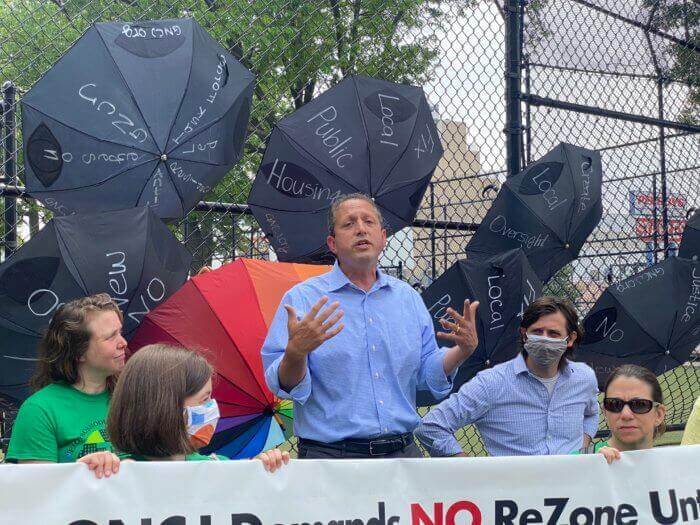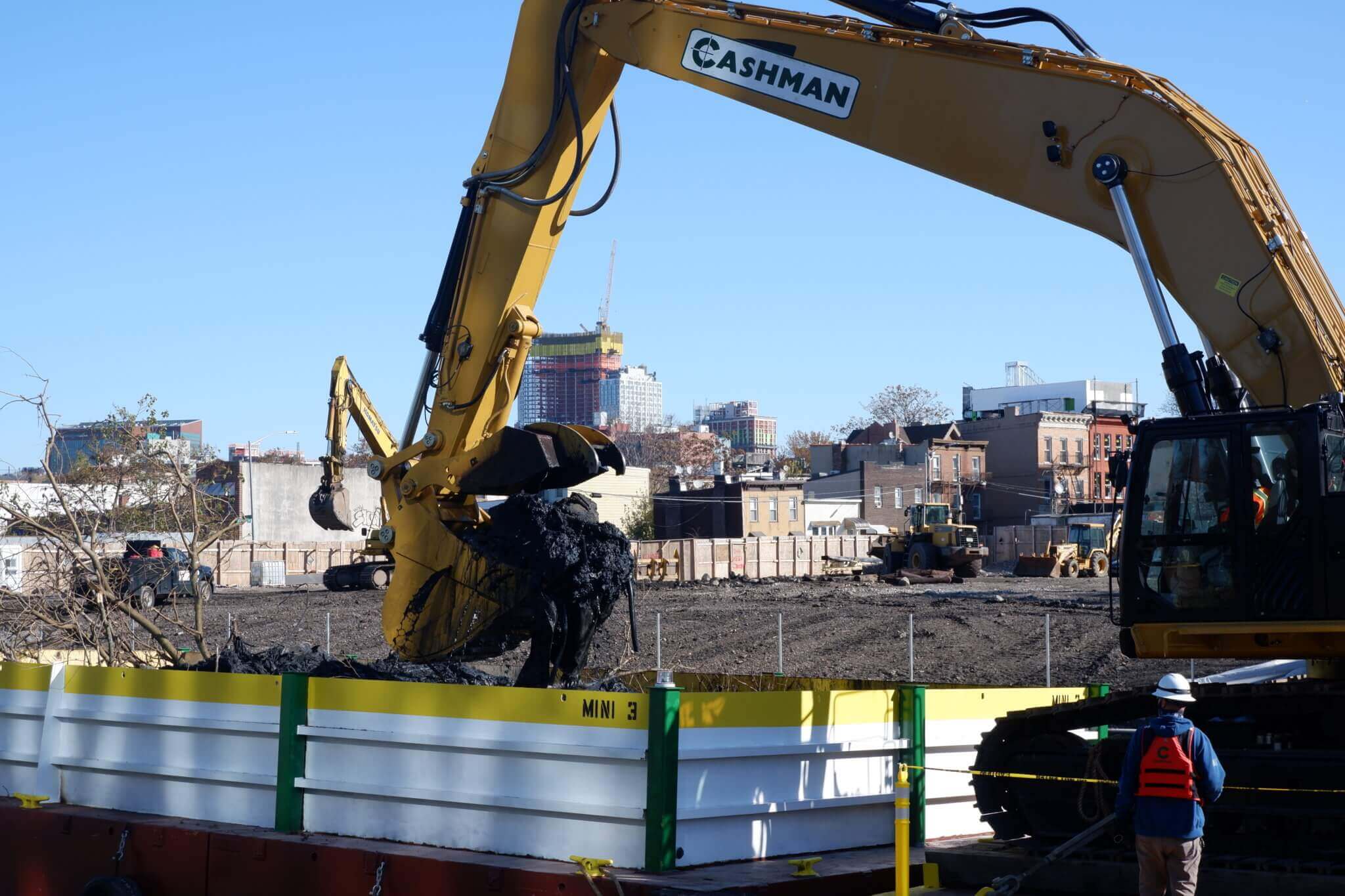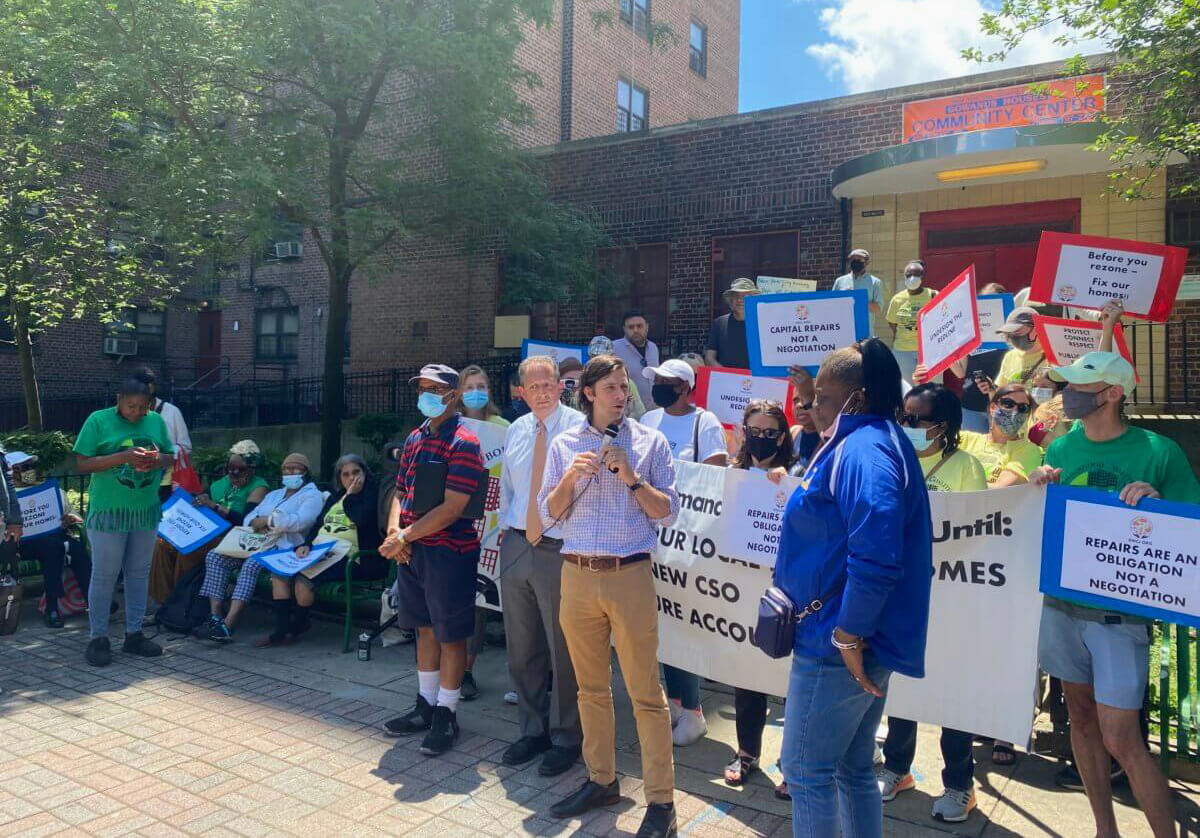City Announces Appointment of Facilitator for Gowanus Rezoning Oversight Task Force
James Lima Planning + Development has been selected as the facilitator for the Gowanus Rezoning Oversight Task Force, city officials announced, with Principal Ben Margolis serving as the head facilitator.

Gowanus. Photo by Susan De Vries
James Lima Planning + Development has been selected as the facilitator for the Gowanus Rezoning Oversight Task Force, city officials announced Tuesday, with Principal Ben Margolis — the former head of the Southwest Brooklyn Development Corporation — serving as the head facilitator. Margolis and the company will work with the city, developers, and the community to ensure all parties are making good on the promises the city made the neighborhood.
The promises of the Gowanus rezoning
Last year, just before the massive rezoning was set to be voted on in the New York City Council, then-council members Stephen Levin and Brad Lander — who had pledged not to approve the project if certain community demands were not met — announced they had reached a last-minute agreement with then-mayor Bill de Blasio and a number of local community groups and neighbors. Weeks later, the council voted to approve that rezoning almost unanimously, setting in motion a major reconstruction of the once-industrial nabe.
Critically, the city agreed to form an independent task force to monitor the rezoning and to appoint a facilitator who would serve as a liaison between locals, city government, and private developers to make sure the Points of Agreement are followed as the rezoning takes shape. Earlier this year, five applicants submitted their proposals to a hiring committee — comprised of staffers from the offices of council members Lincoln Restler and Shahana Hanif, members of Brooklyn Community Board 6, and representatives from local orgs — and JLP+D and Margolis came out on top.
“The new lead facilitator Ben Margolis, through his work as Executive Director at the Southwest Brooklyn Industrial Corporation and supporting multiple neighborhood coalitions, especially the Gowanus Neighborhood Coalition for Justice, helped form an early framework for the Gowanus Task Force,” Restler and Hanif said in a joint statement. “JLP+D’s extensive leadership experience, background in planning and preserving manufacturing spaces, coupled with their deep bonds with the Gowanus community and productive work on behalf of the city made them far and away the best choice for this position.”

The Manhattan-based firm has worked with private developers, nonprofits, and local governments to develop and fund affordable housing, public green spaces, and climate-resiliency projects in New York City and across the country — including in southern Brooklyn and the Brooklyn Navy Yard, according to its website.
Perhaps more relevant than its work in the borough is the company’s contribution to city-sponsored flood-resiliency projects in Manhattan and a redevelopment plan for contaminated Brownfield sites in the Bronx.
Many of the more than 50 Points of Agreement focus on the ongoing cleanup of the hazardous Gowanus Canal Superfund and the many toxic sites beside it — including Public Place, a heavily contaminated former oil plant that is slated to be home to an all-affordable development called Gowanus Green. The city also promised to upgrade sewer infrastructure in the flood-prone nabe and begin regularly testing levels of contaminants in the Gowanus sewershed.
“We’re excited to offer the future Gowanus Oversight Task Force support that will benefit from Ben Margolis’ long record of service to the Gowanus community,” said JLP+D president James Lima, in a statement. “We believe this is a unique and rare opportunity to model a collaborative forum that not only tracks public commitments but fosters a more trusting, candid, and ongoing dialogue about Gowanus and its evolution toward greater equity and justice.”
Starting this week, the facilitators will start meeting with community members to establish an application process for the Task Force, according to a representative from Hanif’s office. In those first meetings, the group will decide who is eligible to join the task force, establish the size and makeup of the group, and hash out how many individuals versus community groups will be represented on the panel.
Per the POA, JLP+D and Margolis will meet with the yet-to-be-formed Task Force at least once a quarter to provide updates on progress and compliance with the agreement. The Task Force — which will be comprised of members of CB6, community groups, representatives from city agencies and other local government — will launch in the next few months.

“Over the past seven years, we have fought as a community for city commitments to a just, inclusive, resilient Gowanus, including investment in parks, streets, and public spaces; policy and ongoing tracking to ensure that new development does not add to canal pollution, and long-term planning for a changing climate,” said Andrea Parker, executive director of the Gowanus Canal Conservancy, in a statement. “The Oversight Task Force will be a groundbreaking model for holding the city accountable for promises made across the neighborhood.”
Enforcement and optimism for the Task Force
Though the POA was lauded by Gowanus residents and pols, enforcing such an agreement is at the very least tricky — and can sometimes prove impossible. Developers often agree to “Community Benefits Agreements,” clauses negotiated by council members, to win their approval — then fail to deliver on those agreements. CBA’s are not enforceable — so there are few, if any, repercussions for those who discard them. The city, in the POA, promised to abide by Environmental Protection Agency orders regarding the Superfund cleanup — but the federal agency has long maintained that the city is out of compliance with its guidance.
Because of the sheer size of the Gowanus rezoning — the project covers 82 city blocks and is expected to bring more than 8,000 new residents to the environmentally sensitive neighborhood — the POA is wide-ranging and important, mandating the city provide ample funding to renovate thousands of apartments in multiple New York City Housing Authority complexes, create workforce training programs and opportunities for small businesses, and create new open spaces and playgrounds in the area.
“It’s going to be challenging, but it’s surely worth it,” said Andreas Tyre, president of the Gowanus Houses tenant association, in a statement. “It’s a good start to enriching the lives of those living on NYCHA campuses who’ve long been neglected.”

It’s not quite clear how the Task Force or the facilitator will hold developers or the city to account, though local community groups are optimistic.
“We demanded funds for NYCHA capital improvements, it wasn’t for those funds to exist as a line item in a budget,” CB6 district manager Mike Racciopo told Brooklyn Paper. “We wanted, and want, those improvements to be real and improve the homes of thousands of Gowanus neighbors. We’re confident the facilitator will be instrumental in making that the reality and all the conditions in the POA a reality.”
Setting the standard for future rezonings
Hanif, Restler, and Lima also hope the newly created model will become standard for future large-scale city rezonings, they said, which have often failed to deliver on their promises.
“The Gowanus rezoning is far from perfect, but the over 50-point POA and Task Force Process is a historic development in our city’s typical developer-led land use process,” the pols said. “Through deep collaboration between our offices, Community Board, and community stakeholders, the process for onboarding the facilitator and setting the foundation for the Task Force have been intentional and community-led. As the Task Force becomes fully operational in the coming months, it will continue to be a community-led space for keeping city and development actors accountable to their commitments.”
Editor’s note: A version of this story originally ran in Brooklyn Paper. Click here to see the original story.
Related Stories
- Brooklyn Judge Dismisses Gowanus Rezoning Lawsuit, Activists File Appeal
- Citing Hazardous Unexpected Work, Activists Sue to Stop Construction in Rezoned Gowanus
- Unexpected Pile Driving on Site Along Gowanus Canal Leaves Officials Scrambling for Answers
Email tips@brownstoner.com with further comments, questions or tips. Follow Brownstoner on Twitter and Instagram, and like us on Facebook.








What's Your Take? Leave a Comment